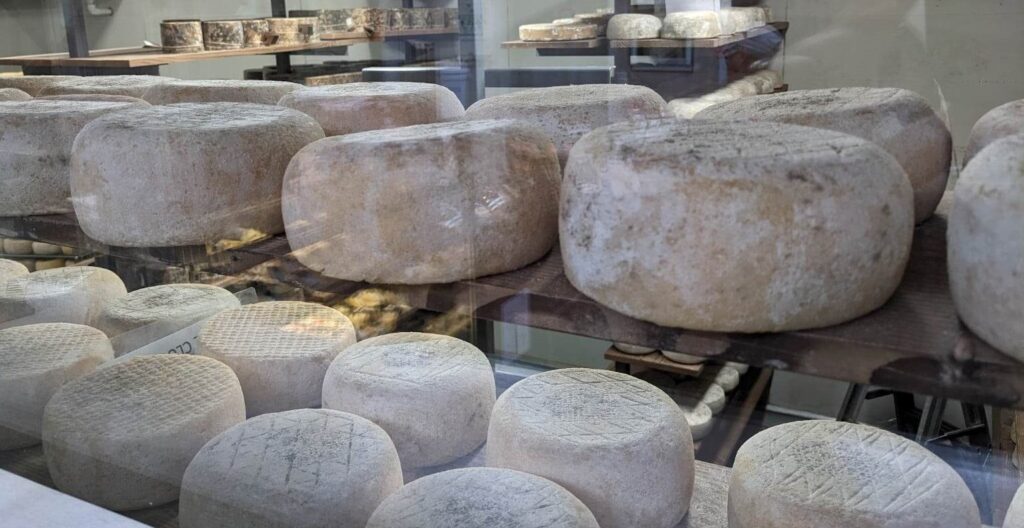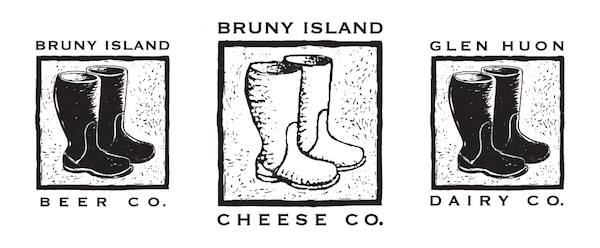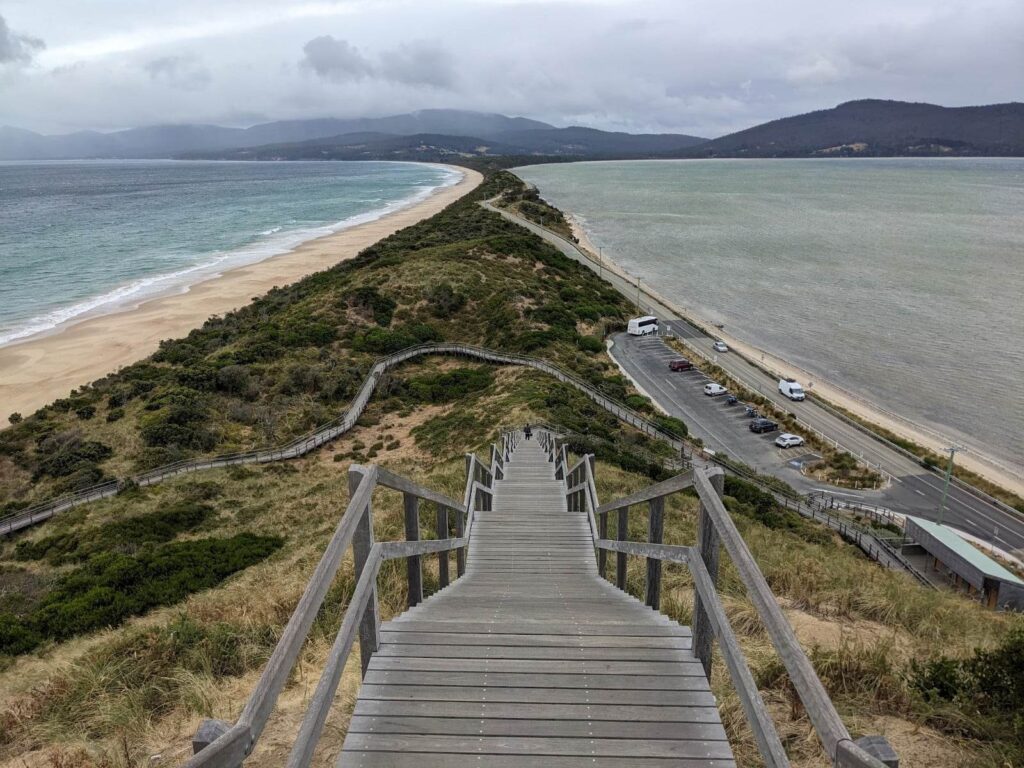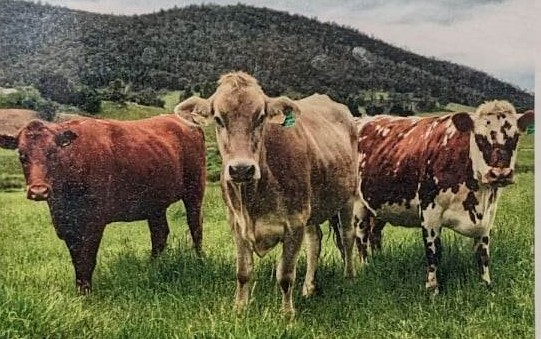“Dessert without cheese is like a beauty with only one eye” ~ Jean Anthelme Brillat-Savarin
When we first visited Tasmania, back in the late eighties, it was known as a destination for serious hikers, those keen to explore the wilderness and test their mettle by trekking over mountains and through marshes, in extremely variable weather. These days, this far-flung island state has become a destination for the Foodies of the world. So, it is probably about time I stopped dwelling on Tasmania’s past and looked to its present and future…
First, have you ever heard of Bruny Island? Neither had I, to be honest, until I discovered that a family friend had moved there to make cheese, where he was using the traditional techniques that he had learned in Europe. About ten years ago, nosing through an elegant little cheese shop, tucked away in the basement of the old GPO in Martin Place, Sydney, I came across The Bastard, a cheese of ‘slightly dubious parentage’ that had been made from a mixture of cows’ and sheep’s milk. And lo, it had been made by that same family friend. Since then, Nick Haddow has expanded his cheese business to include beer, wine and a herd of dairy cows to provide milk for the cheese making.
Have I ever ‘fessed up’ about how much I love eating cheese; that I am, in fact, a cheese fetishist (Fetish: an object of irrational reverence or obsessive devotion; a fixation); that a fridge without cheese in it might as well be empty? Well, that’s me. Now that’s off my chest, you will perhaps understand why Bruny Island was number one on my list of places to visit in Tasmania this summer. As it turns out that Nick also has a bit of an obsession about cheese – only he doesn’t only love eating it, he makes it, too.
Bruny island is located off the southeast coast of Tasmania, the ferry just half an hour from Hobart. It has a miniscule population of about 600 people, although it is almost seventy kilometres from top to toe. Bruny Island actually comes in two parts – North and South Bruny – separated by a long, narrow spit of sand dune and beach – the Neck. Here, thousands of mutton birds or shearwaters breed in burrows among the dunes, before flying 64,000 kilometres back across the Pacific ocean to the Bering Sea. Once a seasonal delicacy, these birds are now jealously guarded from over-hunting, but in the past few years, Bruny Island has become famous for the excellence of other more available local produce: fresh oysters, artisan cheese, chocolate, honey, beer and whiskey.
At nine o’clock one wet Wednesday morning, the car ferry chugged across D’Entrecasteaux Channel, the rain lashing on the windscreen, the coastline a blur. Luckily, by the time we reached the Bruny Island Cheese Company, the clouds had begun to recede. We booked a cheese tasting, and waited eagerly, armed with a warming coffee and homemade biscuits, as we explored the shop, full of locally made condiments and cookbooks. I couldn’t resist a jar of tomato kasundi relish, rich, aromatic and spicy, and of Indian origin. Designed ‘to complement your food rather than dominate it,’ it is absolutely divine, and I know I will be using it on everything.
A couple of days later, we caught up with Nick for lunch on Salamanca Place, in Hobart. Unfortunately, our time together was all too short, and exchanging decades of family news left us little time to talk cheese. Luckily, Jess had filled us in on the background to the Bruny Island Cheese Company and its various products. As Nick has become something of a media personality since we last met up, you, too, can find out all about his amazing, and exhaustingly busy life both online and on TV. In brief, he has been part of Slow Food Australia, sold cheese in Melbourne, judged cheese competitions, written about cheese, and joined his epicurean mate, Matthew Evans on the SBS series Gourmet Farmer, not to mention winning an armful of awards. And that’s on a quiet day!
Nick and his wife, Leonie, turned up in Tasmania with a Kombi and a surfboard way back in 2001. Eventually, they found themselves a few acres on Bruny and settled in to make cheese the old fashioned way. Nick is a boutique cheesemaker, handcrafting his cheeses in relatively small numbers, His range of artisan cheeses is also small and select, each style distinctly different. The ‘limited edition’ mentality reigns here on Bruny Island. Mass production? Begone. And twenty years down the track, its not just about cheese. Over the years, Nick has turned his hand to farming, brewing, baking and cheesemaking, using traditional techniques all the way.
As we make ourselves comfortable on the rustic veranda at the Bruny Island Cheese Co., Jess brings us four cheeses to taste, served up with a warm baguette, fresh from the wood oven. While there is no sign of my old favourite, The Bastard, it is nonetheless a great selection, paired with either a hand crafted beer or a glass of wine, whatever we prefer.
The cheese list is also seasonal, Jess explains. Everything is about careful attention to detail, or ‘quality over quantity,’ as the saying goes. And the milk, once sourced from local farmers for thoroughly Tasmanian cheeses, is now delivered by Nick’s own herd of twenty heritage cows in Glen Huon, where even the grass is heritage. According to the website, the farm is ‘a showcase of ethical, sustainable, small-scale, organic dairy farming that is all about maximising animal welfare and milk quality.’ Nick’s ‘ladies’ come from three unusual breeds that have gone out of favour with those who are mass-producing cheese: the Brown Swiss, the Australian shorthorn and the Normande. All three provide particularly rich, creamy milk. In limited amounts. Apparently they even take holidays!
Most notably, Nick plagued the Australian government to provide him with a special licence to create cheese made from unpasteurized or ‘raw’ milk, which he achieved in 2009. Pasteurization boils the milk to 72 degrees to kill off any bacteria. Unpasteurized milk is heated only to 35 degrees. In Australia, this process is heavily regulated and raw milk has been widely condemned as unsafe. Pasteurisation of milk does prevent diseases – those notoriously nasty ones like tuberculosis, diphtheria, and scarlet fever – but it also destroys some of the good bacteria we need in our bodies, and has a tendency to reduce the flavour profile of the cheese. Nick has written a book, Milk Made, in which he discusses the pros and cons of pasteurization. As I failed year 10 chemistry, much of the scientific detail went over my head, but the message was clear. Raw milk from healthy animals eating healthy grass is perfectly safe. And it will make your cheese much tastier.
So, we try one of his unpasteurized cheeses, and it is delicious. Back in 2009, Raw Milk C2 was the first raw milk cheese in Australia. Imitating a type that has been made in the mountains of France and northern Italy for generations, this curd cheese ages well, we are told, developing a sweet aroma and a mildly nutty flavour.
‘Tom’ is a hard cheese with an edible rind, related to the Tomme cheeses from the mountainous Savoie region of France. It is very easy to nibble on. Traditionally made with sheep’s milk, Nick uses cows’ milk instead. Anyone got a pear?
The ‘1792’ is one of the company’s signature cheeses. Commemorating the year that the French landed in Tasmania, this cheese is washed in brine twice a day, for two weeks, then aged on Huon Pine. Pungent and wonderfully creamy, if you like your cheese to smell like malodorous feet, as I do, you will love this one.
And finally, O.D.O, which stands for one day old. This simple curd cheese is drained overnight, lightly salted and then marinated in olive oil that has been flavoured with garlic, chilli, black pepper and chives. I could happily eat it with a spoon, but apparently it is also ‘perfect on an antipasto plate, stirred through hot pasta or crumbled over grilled vegetables.’ I seem to remember tasting something similar on a goat farm in the Philippines, topped with grilled peppers… yum.

As we are heading home tomorrow, driving north beneath the summer sun, we decide it might be wiser not to fill the car with smelly cheese. Instead, we will wait till we got home, then sign up to Nick’s cheese club for a regular delivery. A box of joy filled with cheeses and other delights, such as condiments, baked goods from the wood fired oven, and perhaps a craft beer or two. Who knew such a thing was possible? My fridge will never be bare again….
Brand Tasmania began in 2018 with a mission ‘to inspire and encourage Tasmanians, and those who want to be Tasmanian, to quietly pursue the extraordinary.’ As Chairman of the Board, Nick Haddow practices exactly what he preaches, in the company of his inspiring team of cheesemakers, bakers, brewers and farmers. As the late, great Anthony Bourdain once said, “You have to be a romantic to invest yourself, your money, and your time in cheese.” So, let’s raise a glass to the romantic cheesemakers of the world. They certainly have this cheese lover’s everlasting devotion.




